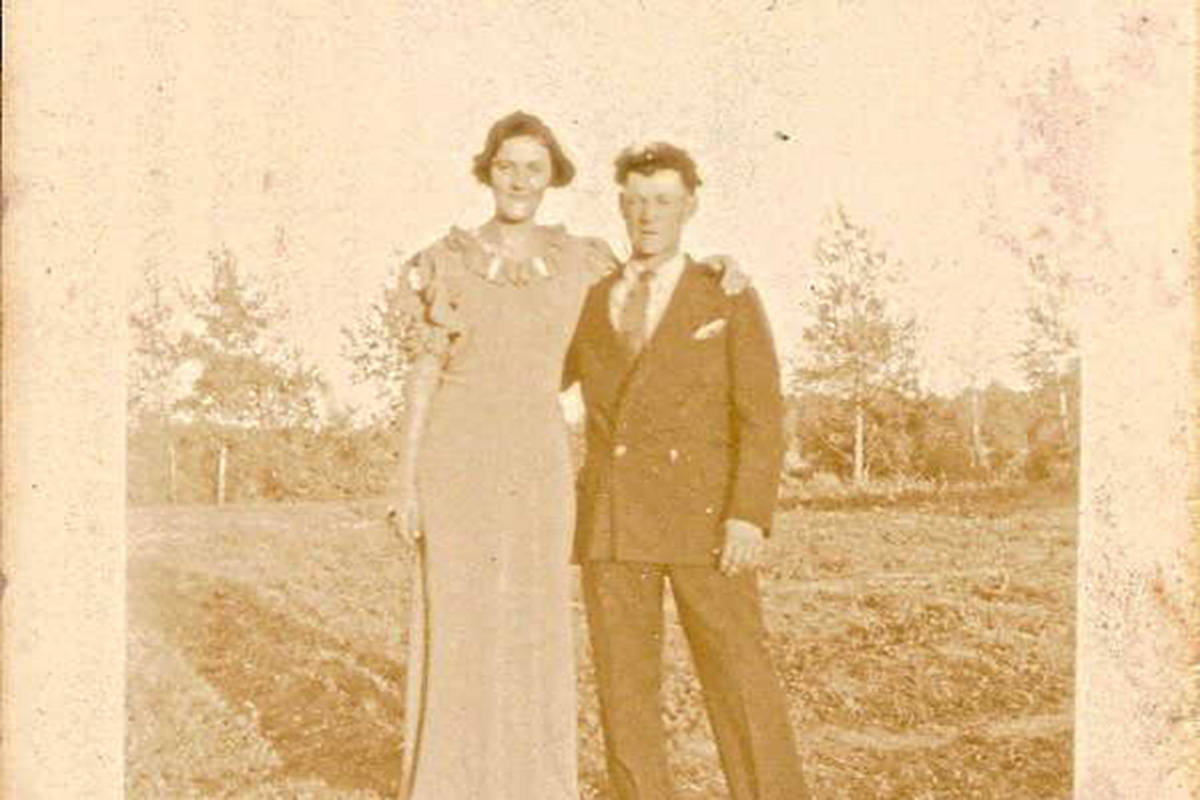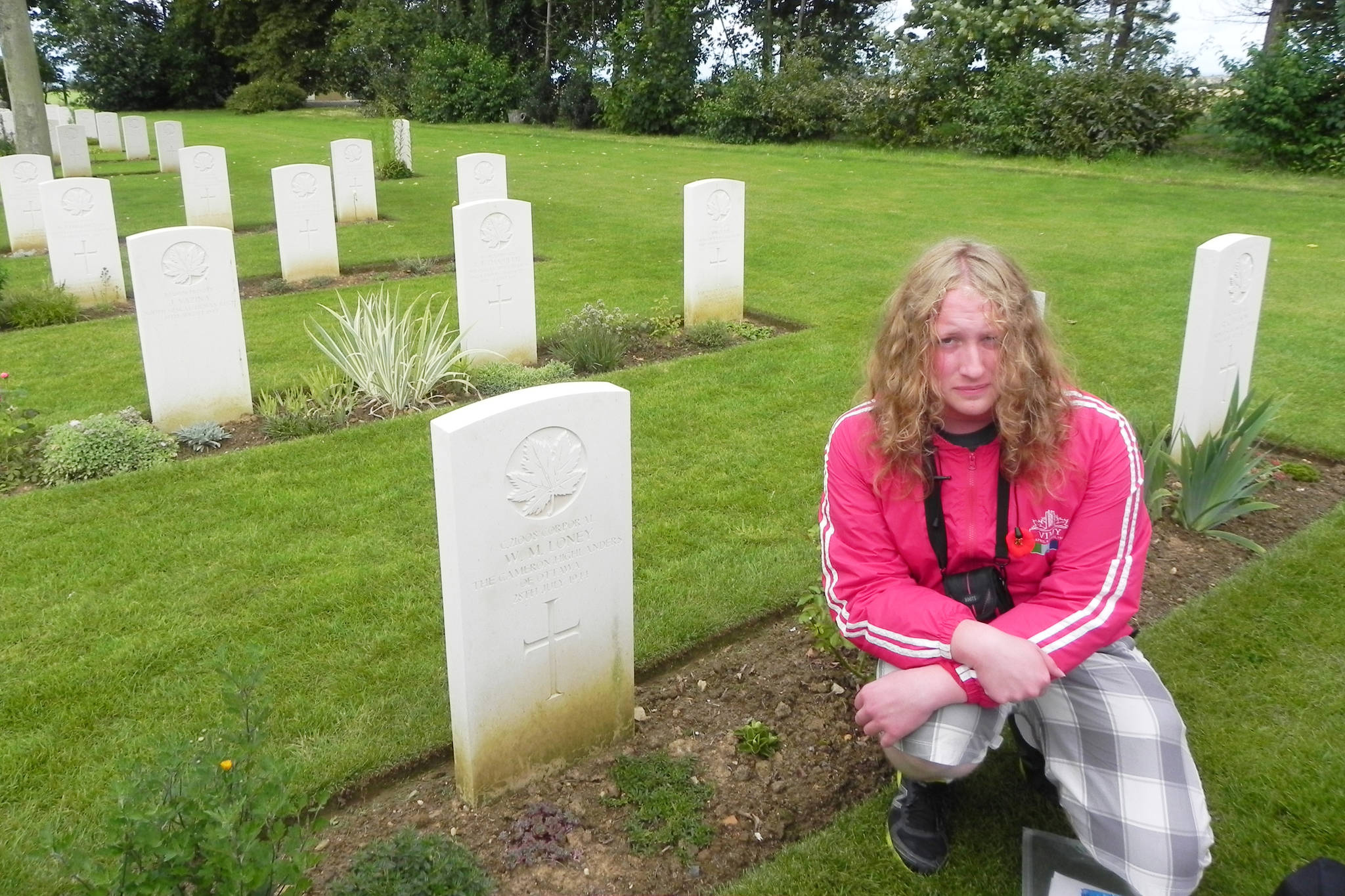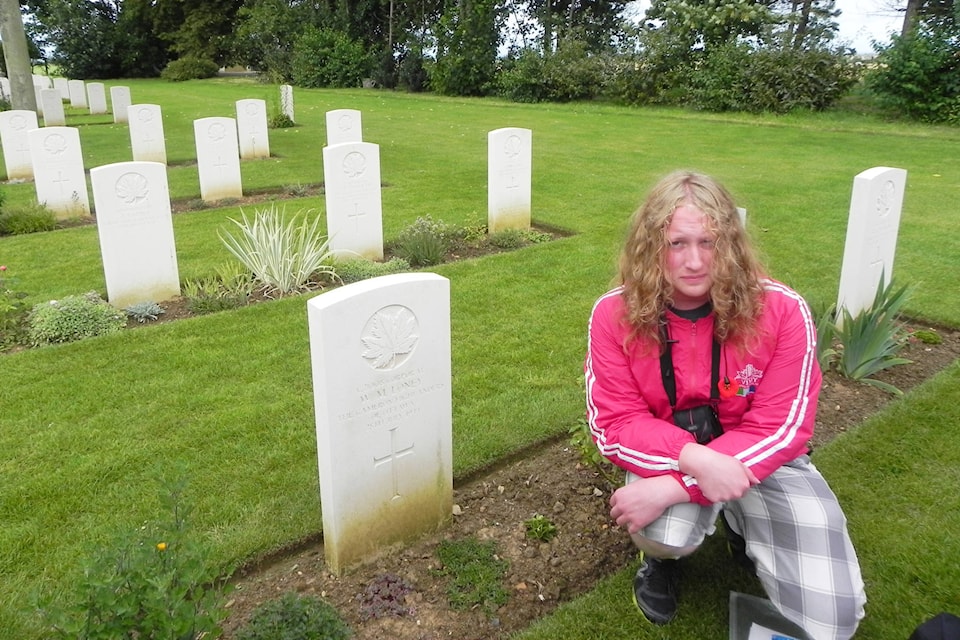”The Canadian Corps, a 100,000 strong fighting formation, was ordered to the Passchendaele front, east of Ypres, in mid-October 1917. But unceasing rain and shellfire reduced the battlefield to a vast bog of bodies, water-filled shell craters, and mud in which the attack ground to a halt.” - (Passchendaele,www.warmuseum.ca)
Though Brandon Taschuk will be working Nov. 11, the 20-year-old UBC Okanagan student’s thoughts will be with his great-great grandfather.
Benjamin Wesley Loney was born May 15, 1899 and enlisted in the military in 1915. He was almost 18 when he fought and nearly died at Passchendaele in 1917—a revelation Taschuk learned only three years ago.
“The story is kind of funny, and kind of scary as well,” the former W.L. Seaton Secondary School student recalled.
“My great-great grandfather was five-foot-two and weighed 138 pounds, and there were these mud bogs all over the (battle) field, and during a battle, he was thrown into the air, head first by explosion, and buried under the mud.”
“Thankfully,” one of Loney’s fellow soldiers walked by and noticed two small shoes sticking out of the mud.
“The soldier apparently said,‘I know who that is. It’s Benjamin Loney,’ and then they dragged him out and patched him up,” Taschuk explained before pointing out that many wounded left on the battlefield drowned in the mud and water before they could be rescued.
“My great-great grandfather was lucky—a lot of soldiers at Passchendaele died that way,drowned in a mud bog.”
Taschuk, who currently studies nursing, said the emotional weight of his relative’s near—death experience truly hit him when he visited the land where the infamous battle took place.
“When I was there, it had been raining for a few days. And I was standing there thinking, this is a spot where my family tree almost came to an end. If he had died, I wouldn’t be here. It was a really sobering thought.”
Taschuk was 17 when he walked the land at Passchendaele—the same age as Loney, a century before, lay facedown in the mud praying for respite.
“I was standing there thinking, this is a spot where my family tree almost came to an end. If he had died, I wouldn’t be here.”
But he acknowledges he might not have ever known at all had it not been for the Vimy Foundation.
Founded in 2006, the mission of the Vimy Foundation is to preserve and promote Canada’s First World War legacy as symbolized with the victory of the Battle of Vimy Ridge in April 1917, a milestone when Canada came of age and was then recognized on the world stage.
In 2014, Taschuk, who was then 16-years-old,was one of 14 students from across Canada to receive the Foundation’s Beaverbrook Vimy Prize, a prestigious summer scholarship for youth 15 – 17 years of age that is awarded on the basis of essay submissions, reference letters, and motivation letters.
Those selected to participate in the fully-funded program are given the opportunity to attend lectures at Oxford, visit Essex Farm in Belgium where John McCrae wrote In Flanders Fields, the Imperial War Museum, Churchill Museum and Westminster Abbey, as well as other key sites in France and Belgium, commemorating First World War soldiers, including the Ypres battlefield sites, Passchendaele, and the Canadian National Vimy Memorial.
Taschuk said he learned of the “once-in-a-lifetime” opportunity in his Grade 11 social studies class, when his teacher shared a poster from the Vimy foundation offering a chance to win a free trip to Europe. The self-admitted history buff said he was intrigued by the trip, but “slightly intimidated” at the prospect of writing an essay — ultimately, however, he decided to take a chance.
“I wrote my essay about Walter Allward, who designed the Vimy Memorial in France—the Canadian values he embodied in his design, which were were truth, knowledge, hope, charity, faith and honour, and how these are all values that myself and many Canadians strive to live up to and that they are national values in that they are things that many other nations define us by as Canadians,” Taschuk explained.
Before he left for Europe that summer, Taschuk’s grandmother told him where he would find his great-grandfather, as well as Loney’s nephew, William,who was buried in Bény-sur-Mer war cemetery— which Taschuk also visited during the trip.
William was born in 1920, and on July 28, 1944 (shortly after D-Day) his unit came under attack by an enemy aircraft, which dropped a bomb resulting in shrapnel wounds for William. He later died from his wounds and was never able to return to his pregnant English war bride, who gave birth to his son after his death.
Taschuk said these stories made the cemetery visits and tours much more meaningful for him when he was overseas.
“It made me appreciate what they (soldiers) went through,” he said. “My (great) great grandfather lied about his age so he could leave his family and go fight in a war. I’m not sure I could do that, so it really makes you appreciate their sacrifice.”
Erin Christie
Morning Star Staff
@VernonNews
erin.christie@vernonmorningstar.com
Like us on Facebook and follow us on Twitter.
RELATED
- Student and veteran collaborate for project
- Millennials more likely to attend Remembrance Day ceremonies: poll


